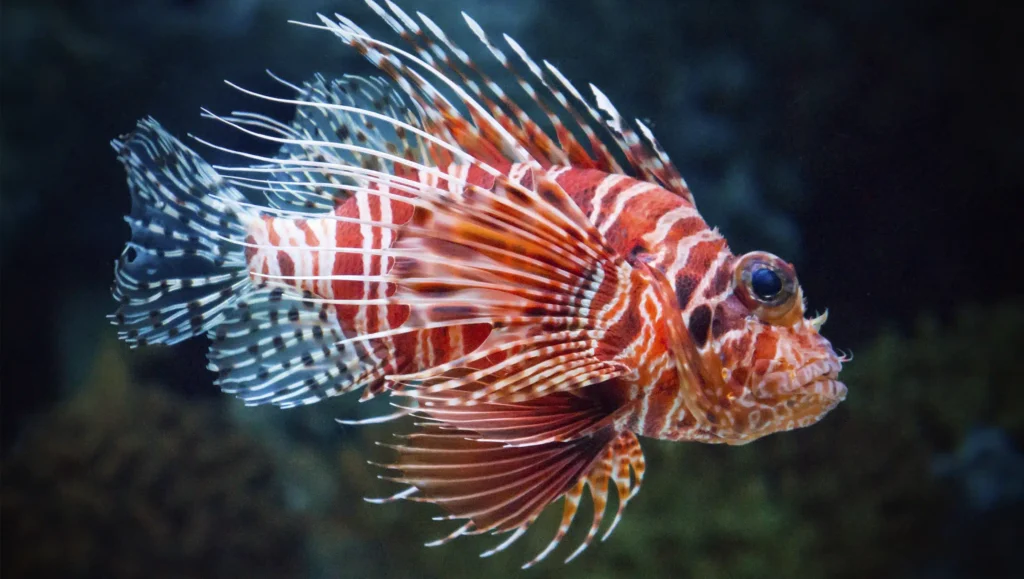Lionfish, with their striking appearance and venomous spines, are often feared by divers and seafood enthusiasts alike. But did you know that this exotic predator is not only safe to eat but also incredibly delicious? In fact, eating lionfish is emerging as a sustainable solution to protect marine ecosystems while enjoying a flavorful meal. If you’ve ever wondered can you eat lionfish, this comprehensive guide will answer all your questions and give you compelling reasons to include it in your seafood repertoire.
- What Is a Lionfish and Where Does It Come From?
- Table of Contents
- Is It Safe to Eat Lionfish? Understanding Its Venom and Safety
- What Does Lionfish Taste Like?
- 7 Powerful Reasons to Eat Lionfish
- How to Cook Lionfish the Right Way
- Countries That Eat Lionfish
- Is Eating Lionfish Dangerous or Beneficial?
- How Lionfish Hunting Helps Marine Life
- FAQs About can you eat lionfish
- Final Thoughts: Turning a Predator into a Plate of Purpose
What Is a Lionfish and Where Does It Come From?

Table of Contents
Lionfish are native to the Indo-Pacific region, boasting iconic red, white, and brown stripes with long, flowing fins. Unfortunately, these captivating predators have become an invasive species in the Caribbean, the Gulf of Mexico, and the Atlantic coast of the United States. Their presence threatens coral reefs and native fish populations because of their rapid reproduction and voracious appetite.
By harvesting and eating lionfish, you can actively contribute to controlling this invasive species. This makes lionfish not just an exotic culinary experience but also an environmentally responsible choice for adventurous eaters.
Is It Safe to Eat Lionfish? Understanding Its Venom and Safety
A common misconception is that lionfish are too dangerous to eat because they are venomous. While it’s true that lionfish have venomous spines capable of delivering a painful sting, their flesh is completely safe for consumption. The venom is only present in the dorsal, pelvic, and anal spines, so careful handling and proper filleting make the fish safe to enjoy.
Safety tips for eating lionfish:
- Use gloves or a cloth when handling live lionfish.
- Carefully remove all spines before cooking.
- Cook the flesh thoroughly to enhance flavor and texture.
Once prepared correctly, lionfish meat is as safe to eat as any white fish, making it perfect for those wondering can you eat a lionfish without risk.
What Does Lionfish Taste Like?
Lionfish meat is mild, tender, and slightly sweet, often compared to snapper or grouper. Its delicate, flaky texture makes it highly versatile for a variety of recipes. Whether grilled, pan-seared, or used in ceviche, lionfish absorbs marinades and spices beautifully, making it a favorite among adventurous seafood lovers.
If you’ve ever asked “What does a lionfish taste like?”, imagine a buttery, clean-flavored fish that pairs perfectly with citrus, herbs, or light sauces. It’s a culinary delight that deserves a place on your plate.
7 Powerful Reasons to Eat Lionfish
1. It’s 100% Safe When Prepared Properly
By removing the venomous spines and cooking the fish correctly, lionfish is completely safe to eat. This makes it a low-risk yet high-reward choice for seafood enthusiasts.
2. It’s a Delicious White Fish Option
Lionfish offers a mild, flaky texture ideal for multiple cooking styles. From pan-searing to grilling, it is a versatile addition to any recipe collection.
3. It Supports Ocean Sustainability
Eating lionfish helps mitigate the negative impact of invasive species. By turning a predator into a meal, consumers support reef restoration and marine biodiversity.
4. It Helps Control an Invasive Species
Lionfish reproduce rapidly and threaten native fish populations. Consuming them directly reduces their numbers, aiding conservation efforts.
5. It’s Rich in Protein and Low in Mercury
Lionfish are packed with lean protein and are considered low in mercury, making them a healthy alternative to other predatory fish.
6. It Promotes Eco-Friendly Dining Trends
By including lionfish in your diet, you align with sustainable seafood movements. It’s a responsible, environmentally conscious choice.
7. It’s Becoming a Culinary Trend Globally
Chefs worldwide are incorporating lionfish into menus, turning this once-feared fish into a sought-after delicacy.
How to Cook Lionfish the Right Way
Cooking lionfish is simple once you understand the proper preparation. Always remove all spines and fillet carefully. Here are a few popular methods:
Pan-Seared Lionfish
- Season fillets with salt, pepper, and herbs.
- Heat oil in a pan over medium heat.
- Cook each side for 3–4 minutes until golden and flaky.
Grilled Lionfish
- Marinate in olive oil, garlic, and lemon juice.
- Grill for 5–6 minutes per side.
- Garnish with fresh herbs for a light, flavorful dish.
Lionfish Ceviche
- Dice fresh lionfish fillets into small pieces.
- Marinate in lime juice for 20–30 minutes.
- Mix with onions, tomatoes, cilantro, and chili for a refreshing appetizer.
Note: Only use extremely fresh lionfish when preparing raw dishes.
Pairing your lionfish dish with cocktails can enhance the experience — try it alongside a classic Black Manhattan Recipe for a sophisticated touch.
Countries That Eat Lionfish
Lionfish consumption is common in several regions, including the Caribbean, Mexico, and parts of the U.S., particularly in coastal areas. Restaurants and local markets are increasingly offering lionfish to promote sustainable eating and reduce invasive populations.
Is Eating Lionfish Dangerous or Beneficial?
Despite fears about venom, lionfish are safe to eat when handled correctly. Eating them is not only safe but beneficial for the environment. Removing lionfish from reefs prevents ecological imbalance and supports conservation. Addressing questions like “Is eating lionfish dangerous?” or “Can lionfish kill you?”, it’s clear that the risk is negligible when cooked properly — the real danger lies in touching the spines, not the flesh.
How Lionfish Hunting Helps Marine Life
Divers often remove lionfish from reefs to protect native species. Many regions incentivize this practice, offering rewards for catching them. Curious about the financial aspect? You can learn more about lionfish hunting pay. Hunting and consuming lionfish simultaneously provides both an environmental benefit and a sustainable seafood source.
FAQs About can you eat lionfish
1. Is lionfish safe to eat?
Yes! Lionfish flesh is completely safe once the venomous spines are removed and the fish is cooked. The venom is only in the spines, so careful preparation ensures a safe, delicious meal.
2. Can lionfish be eaten raw?
Lionfish can be eaten raw in dishes like ceviche, provided the fish is extremely fresh. Ensure all spines are removed and the meat is handled hygienically to prevent contamination.
3. What do lionfish eat?
Lionfish are carnivorous predators, feeding on smaller fish, shrimp, and other invertebrates. Their hunting habits make them highly invasive in non-native waters.
4. Can lionfish kill you?
The venomous spines of a lionfish can cause painful stings, but eating the fillets is completely safe. The risk of death is extremely low and only occurs from direct spine contact.
5. Why is eating lionfish good for the environment?
Consuming lionfish helps reduce invasive populations, protecting coral reefs and native fish species. It turns a marine problem into a sustainable dining opportunity.
6. How to cook lionfish at home safely?
Remove all spines carefully, fillet the fish, and cook thoroughly. Popular methods include pan-searing, grilling, and ceviche. Proper preparation ensures both safety and flavor.
Final Thoughts: Turning a Predator into a Plate of Purpose
Lionfish are not just a striking underwater predator — they are a delicious, safe, and sustainable seafood choice. By understanding how to handle and cook lionfish, adventurous eaters, divers, and sustainability enthusiasts can enjoy a unique culinary experience while supporting marine conservation. Next time you’re considering seafood options, ask yourself: can you eat lionfish? The answer is a resounding yes — safe, flavorful, and environmentally responsible.
Embrace the trend, try new recipes, and transform the ocean’s predator into a plate of purpose.




